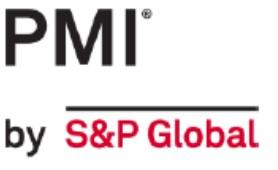The Global Purchasing Managers Index (PMI) for manufacturing, produced by S&P Global and sponsored by J P Morgan, fell very slightly to 50.9 in June (the revised reading for May was 51.0). The manufacturing PMI is a weighted composite index of new orders (30%), output (25%), employment (20%), suppliers’ delivery times (15%) and stocks of purchases (10%). In the latest report, four of these elements (the exception was stocks of purchases which fell) were consistent with expansion in activity, although in the case of suppliers’ delivery times lengthening, this is a false reading as this is being caused by shipping delays rather than increased demand. Output grew in two subsectors – consumer and intermediate goods – but there was a reduction for investment goods for the 2nd time in three months; Output increased in 18 of the 30 countries covered by the Global PMI Report (data for Canada and Columbia was not available when the report was published).
The manufacturing PMI for the UK eased back from 51.2 in May to 50.9 but both output and new orders grew for the 2nd month in a row and business optimism (not used in the PMI calculation) was close to the high seen in May. However, the report notes that both output and orders only grew in larger companies, with small and medium sized enterprises reporting a fall in both measures. All three sub-sectors saw an increase in output but orders were only positive for the consumer and investment goods groups, with a reduction among the intermediate goods producers.
The manufacturing PMI is also boosted by a continued lengthening of suppliers’ delivery times, although this is a quirk of the calculation rather than a positive sign for activity given that this is caused by shipping delays. There was also a reduction in employment and stocks of purchases.
The PMI for the Euro-zone fell back to its April level at 45.8 with output at a 6-month low and a more rapid fall in new orders and employment than in May. In contrast to the UK, suppliers’ delivery times in the Euro-zone shortened, albeit at the slowest rate since February, but this adds negativity to the PMI calculation.
The manufacturing PMI fell in 7 of the 8 Euro-zone countries covered by the report and the increase in Italy was only fractional and within the margin of error. In addition, only Greece, the Netherlands and Spain had a manufacturing PMI above the crucial 50 level. There are two other landmarks in the Euro-zone with Germany having the lowest reading across this report at 43.5, with Austria (43.6) only slightly behind; the latter was mainly because they had the largest change in the manufacturing PMI compared to May, with a reduction of -2.7 points. Our analysis covers 28 countries and 2 regions.
There is also a negative trend in 4 of the other 5 European Union countries with only an unchanged reading of 45.0 for Poland preventing a clean sweep of June figures lower than the respective May numbers. The change in Hungary (49.4) meant that it joined Czechia (45.3) and Poland (45.0) in negative territory, while Romania is exactly on the neutral reading of 50.0 and only Sweden (53.6) is above the 50 threshold.
Outside of the EU, the manufacturing PMI fell sharply in Switzerland (43.9) and eased down in Turkiye (47.9) but there was a very marginal improvement in Kazakhstan (52.3).
The picture in Asia is more positive, at least in terms of the trends, with only Australia (47.2) and Japan (50.0) having a lower reading than in May. All of the other countries were above the crucial 50 threshold with the ASEAN region unchanged in June (51.7), a marginal increase for China (51.8) and a small improvement for South Korea (52.0). The two stars globally were in this region with India, at 58.3, having the highest manufacturing PMI in this report and Taiwan which had the strongest improvement compared to May – up by 2.3 points to 53.2.
Finally, the Americas has a similar pattern to Asia with only Mexico (51.1) seeing a very small fall in its manufacturing PMI, although both Canada (49.3) and Columbia (49.8) were unchanged. Both Brazil (52.5) and the USA (51.6) had a higher index in June than in May.
Overall, of the 28 countries and 2 regions that we report on each month, 14 were above the 50 threshold that marks the division between contraction and expansion of activity in the manufacturing sector and 2 more were exactly on this mark.
The individual S&P Global PMI reports are available to download on their website at https://www.pmi.spglobal.com/Public/Release/PressReleases but we also have a summary charts report which is available to download below. You should note that the PMI readings for Hungary, Sweden and Switzerland are not compiled by S&P Global but can be found with an appropriate internet search (it also means that they are not part of the global PMI calculation).

